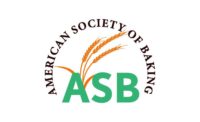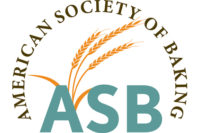Whether at work in a lab or at home in the kitchen, one of my favorite activities is testing a new product concept. I find the process of food-product development fun and interesting. And, there is the perk of getting to enjoy the fruits of my labors—if the trial turns out well.
The amount of work needed to conduct numerous trial runs shouldn’t be underestimated, though. I have learned this through the five product-development competitions in which I have participated.
So what are the tricks of the trade when it comes to developing successful products? After all, the concept-to-market success rate is quite low and competition is stiff. Here are a few things I’ve learned about what it takes to bring a new product to grocery store shelves.
First, the idea itself is a huge part of a new product’s chance for success. The product concept must be unique or fulfill a consumer need and be marketable. Launching a product into a saturated market is a recipe for languishing sales. By knowing what is available in a given market segment, you can identify opportunities for offering a potential new aspect (a flavor, ingredient or health claim, for instance) or niche market (gluten-free, organic, kosher and so on). If formulation permits, the more consumer groups the product can appeal to, the better.
For the 2011 AACC International (formerly the American Association of Cereal Chemists) product development competition, I developed Crunchums, a jalapeno/raspberry popped sorghum snack, with food science classmates Marc Pierre Bianchi and Ashley Pruett. The sorghum-based popcorn ball involved the use of a surplus crop in Kansas and offered the novelty of a “new” grain for the U.S. snack market.
With our creation, we managed to target consumers interested in gluten-free, whole-grain, vegan, vegetarian and fat-free snacks. In addition, bold flavors were gaining popularity at the time, so the jalapeno further broadened the group of potential consumers. The unique snack seemed to be a hit, because we won the grand prize!
Challenges arise when turning a new product concept into a prototype. After all, if it’s easy to make a product, it’ s probably already available.
When developing Crunchums, my classmates and I found that available red, white and black sorghum varieties contained sufficient moisture content for popping (at least 13%). We selected a white variety because its flavor was similar to that of popcorn.
Moisture content is important because enough internal pressure must be built when the kernel is heated to rupture the pericarp, a protective seed coating. Once split, rapid moisture evaporation occurs, causing expansion or “popping.”
We tried several popping techniques—including microwaving in popcorn bags at different wattages, heating in a skillet and pressure cooking—that all ended in burnt, smoking kernels. We also used various fat sources with each method to determine if different melting points and heat-transfer rates affected popping, but to no avail. Only a few kernels popped, if any. Finally, we employed an old-fashioned air popper and—viola!—the kernels popped. This method offers a nutritional benefit, as it requires no fat.
Next came figuring out how to form the balls. Corn syrup was a sticky mess and didn’t harden, while a corn syrup and sugar cane reduction bonded the particulates well once cooled. Drawbacks were undesirable tooth packing and the negative consumer connotation associated with corn syrup. So we substituted agave syrup, which resulted in a desirable texture, taste and connotation. However, the sugar content was too high from a nutritional standpoint. We eventually found that brown rice syrup offered a reduced sugar level and effective binding.
Therefore, a product must be feasible to scale up and commercially produce. Without this component, efficient production is not possible and quality will be difficult to maintain. Turning raw ingredients into a good-quality product consistently is crucial for seeing a return on investment and gaining loyal customers. SF&WB
Elyse Buckley is a Master of Science candidate student in the grain science department at Kansas State University, Manhattan. She had an internship with Flowers Foods in 2009, spending time on a production line and in research and development. She will continue with her bakery studies and offer her observations and impressions of an education in baking.





